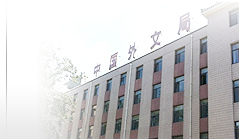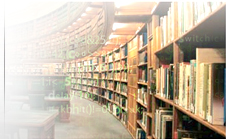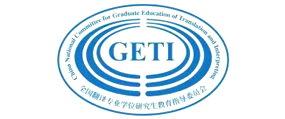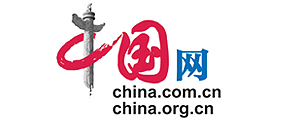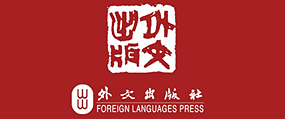目录
生态翻译研究专栏 /05 文本移植的生命存续——“生生之谓译”的生态翻译学新解 胡庚申
13 译者研究的问题转换与生态定位:生态翻译学视角 罗迪江
20 再论翻译生态环境 方梦之
译史纵横 /
28 弗兰金仙的译介与民族象征符号 廖七一
36 “拼却声名顾大局”:曾纪泽的跨语际实践 杨焯
译介研究 /
44 卡尔维诺作品在中国的译介与接受(1955-2019) 周婷
翻译教学 /
52 口译学能测试预测效度研究:以目的语复述为例 尚小奇 柴明颎
63 国内外翻译硕士人才培养模式对比研究 史兴松 牛一琳
译家研究 /
71 论冯友兰哲学术语翻译思想 周勇
79 东亚视野与译学互动——论韩国汉学家朴宰雨的中国文学译介 张乃禹
学术视点 /
88 认知术语学视角下中华思想文化核心术语翻译的概念建构模型——以“天”相关术语为例 黄鑫宇 魏向清
书刊评介 /
98 口笔译神经认知的研究理念与理论构建——The Neurocognition of Translation and Interpreting评析 侯林平 郎玥
学术访谈 /
107 跨学科翻译研究:学科意识与系统路径——加尔博夫斯基访谈录 纪春萍
行业研究 /
113 区块链技术的众包翻译应用 陆艳
翻译技术 /
121 人工智能技术在计算机辅助翻译软件中的应用与评价 周兴华 王传英
学术争鸣 /
130 浅谈《伤寒论》罗希文译本中的几个翻译问题 王娜 闻永毅
实践探索 /
136 政治话语重复修辞的翻译——以《习近平谈治国理政》为例 邓中敏 曾剑平
145 植物名称的因类制宜翻译法探索 任开兴
154 西方修辞学视角下的法庭口译研究 赵军峰 杨之淼
163 多模态视角下的远程视频会议口译——基于医疗平台视频线上会议的案例分析 蒋莉华 李颖
自学之友 /
171 The Bohemian Girl (Excerpt)(Willa Cather) 曹明伦 译
174 翻译什么就研究什么 曹明伦
179 “民主”概念变迁的启示(林巍) 林巍 译
182 在历史沿革中辨析与疏通—— 关于“民主”概念的翻译 林巍
词语选译 新型冠状病毒肺炎疫情相关词汇英文表述(三)
英文摘要
本期主要论文摘要
生态翻译研究专栏
文本移植的生命存续
——“生生之谓译”的生态翻译学新解
胡庚申 郑州大学/清华大学
摘要:生态翻译学的标志性特征之一,在于它以“翻译即文本移植”的思维方式来把握“文本生命”的诞生、生长与存续、发展,并使“文本移植”与“文本生命”的内在关联形成了“转生再生、生生与共”的生态思维范式,从而呈现出翻译作为一种生命形态行为的本质特征。基于文本移植与文本生命的交互融合,生态翻译学将“生”和“生生”视为其生态思维范式的典型特征,以此揭示文本移植的生命法则,把握文本生命的本质和其最基本的存在方式:“生生之谓译”。文章指出,“生生之谓译”为诠释翻译活动的本质提供了一个“古智今用”的全新理念,既深化了我们对生态翻译的理解和认识,又扩展了生态翻译学的研究内容与方式,因而也有助于提升生态翻译学的可解释性和理论价值。——“生生之谓译”的生态翻译学新解
胡庚申 郑州大学/清华大学
关键词:文本移植;文本生命;生态翻译学;“生生之谓译”
译者研究的问题转换与生态定位:生态翻译学视角
罗迪江 郑州大学 / 广西科技大学
罗迪江 郑州大学 / 广西科技大学
摘要:20世纪末以来,译者研究对于译者的认识发生了深刻的变化,其显著变化体现在三个方面:一是从“文本视角”转向“译者视角”;二是从“物本化隐身”转向“人本化显形”;三是从“转换者”转向“生态人”。在生态翻译学视域下,译者作为“生态人”就是从译者的生存境遇出发确立了译者主导、译者责任、译者发展之间的辩证统一关系。它既要考察译者的生存境遇,又要关注文本的生命状态,更要关怀翻译的生态整体,其意旨是通过建构译者生存、文本生命、翻译生态之间的和谐关系去履行生态翻译。这既是译者研究发展的生态定位,也是译者“有所作为”的具体表现。
关键词:译者研究;问题转换;生态定位;生态翻译学;生态翻译
再论翻译生态环境
方梦之 上海大学
方梦之 上海大学
摘要:“翻译生态环境”是生态翻译学的核心概念,是生态翻译学对当代生态翻译的反思与积淀,具有广阔的解释空间。在“论翻译生态环境”(方梦之,2011)一文的基础上,作者拟对“翻译生态环境”所涉概念作进一步探讨。本文中,作者图示了翻译生态环境的概念体系,分析了翻译生态环境的不同层次,阐明了从原文生态环境到翻译生态环境的转化过程,同时也提出了保持“翻译生态平衡”需要进一步研究的相关问题。
关键词:翻译生态环境;概念体系;层次;转化;生态平衡
译史纵横
弗兰金仙的译介与民族象征符号
廖七一 四川外国语大学
摘要:中国向现代民族国家的转型中,民族符号的建构是强化民族认同和建立情感联系的重要因素。弗兰金仙(Frankenstein)通过曾纪泽、严复和梁启超等的译介和改写,演变成睡狮/醒狮的象征符号和国家话语的高频概念。“睡狮/醒狮”形成的“拿破仑说”、“西人说”等,是各派政治势力博弈和大众矛盾心理的产物;而承载了国民情感、想象和期盼的“狮”取代了传统皇家专属符号的“龙”。廖七一 四川外国语大学
关键词:民族国家;弗兰金仙;睡狮/醒狮;象征符号
“拼却声名顾大局”:曾纪泽的跨语际实践
杨焯 华东政法大学
杨焯 华东政法大学
摘要:以清末外交家曾纪泽(1839-1890)的跨语际实践为考察对象,通过史料梳理,本文再现了曾纪泽身前身后的“声名”如何因为语言学习和翻译实践受损,他又是怎样以行动谋求自我实现和国家救亡“大局”的。本文旨在结合曾纪泽所处的历史环境描写和解读其语言学习和翻译实践,从而更全面公正地评价其历史角色,同时展示出翻译实践活动本身的社会意义。
关键词:曾纪泽;外交修约;跨语际实践;翻译研究
译介研究
卡尔维诺作品在中国的译介与接受(1955-2019)
周婷 北京语言大学
周婷 北京语言大学
摘要:依塔洛·卡尔维诺是中国受欢迎的当代意大利作家之一,被称作“作家的作家”,其作品从1955年第一次登陆中国直至今日,大半个世纪以来的卡尔维诺作品翻译与当代中国的文学与社会变迁形成颇为有趣的同构关系。本文选择梳理和研究其作品在当代中国翻译与接受的历史,不仅从译介学角度描述其走过的路线,同时也关注翻译历史与各个社会文化因素之间复杂微妙的关系。
关键词:卡尔维诺;中国;译介;接受;意大利
翻译教学
口译学能测试预测效度研究:以目的语复述为例
尚小奇 深圳大学 | 柴明颎 上海外国语大学
尚小奇 深圳大学 | 柴明颎 上海外国语大学
摘要:目的语复述测试是国际上采用最为普遍的口译学能测试形式。然而采纳这一测试形式的依据大多基于口译研究者和实践者的印象式经验和集体共识,探讨其效度的实证研究仍然非常匮乏。本论文通过对国内四所高校翻译专业硕士(MTI)口译方向52名一年级学生历时一年的实证研究,探讨了汉英复述测试成绩对汉英口译表现的预测效度。相关分析和回归分析结果显示:(1)受试者的汉英复述测试信息、语言、连贯和表述各维度的成绩和汉英口译表现之间均呈显著正相关关系
(ρ1 =0.548, ρ2 =0.604, ρ3 =0.600, ρ4=0.643);(2)受试者的汉英复述成绩可以解释汉英口译表现 42.2% 的变异,其中信息维度(β1 =0.302) 和语言维度(β2 =0.453)的预测程度各不相同。这一研究发现为口译学能测试的设计、实施和评估等测试框架的完善提供了重要的数据参考和实证依据。
关键词:学能测试;预测效度;目的语复述;质量评估
国内外翻译硕士人才培养模式对比研究
史兴松 牛一琳 对外经济贸易大学
史兴松 牛一琳 对外经济贸易大学
摘要:翻译人才培养对翻译专业和学科发展具有重要影响。本研究采用内容分析法,以国外41所和国内46所院校网站中的翻译硕士人才培养内容为研究对象,对目前国内外翻译硕士人才培养模式进行对比分析。研究发现,1)在培养类别和培养目标方面,国外院校开设了口笔译一体专业方向,职业目标更为多样化。2)课程结构方面,国内院校开设了较多中国特色课程,但对视听翻译、术语类等技术课程和职业素养课程的重视不足。3)培养方式方面,国外较国内更多采用“模拟式”授课,课程实践性更强;国内导师的指导方式具有创新性。4)学位论文方面,国内较国外院校更偏重研究的应用性。文章最后依据调研结果为国内翻译专业硕士人才培养提出相应教育启示。
关键词:翻译硕士;人才培养;内容分析法;对比研究
译家研究
论冯友兰哲学术语翻译思想
周勇 四川大学/西南医科大学
周勇 四川大学/西南医科大学
摘要:翻译哲学术语时,如何使名实相符?冯友兰运用西方逻辑分析法,讨论了哲学术语的理解、可译性、翻译标准、翻译方法、翻译批评,形成了具有哲学深度的哲学术语翻译思想。在该思想指导下,冯友兰较为成功地翻译和介绍了许多中西哲学术语。
关键词:冯友兰;哲学;逻辑分析法;翻译思想;哲学术语翻译
东亚视野与译学互动
——论韩国汉学家朴宰雨的中国文学译介
张乃禹 苏州大学
——论韩国汉学家朴宰雨的中国文学译介
张乃禹 苏州大学
摘要:全球化语境下的中国文学外译,应该面向剔除东西方差异的整个世界。但在当下中国文学外译研究中,译学界相对偏重西方和英语世界的中国文学译介问题,而对同质文化圈的韩国乃至东亚译介状况的探讨,欠缺应有的重视。朴宰雨作为韩国知名汉学家和中国文学的主力译者,可视为东亚场域内汉学与翻译的耦合互动中推进中国文学外译的典型个案。他善于将文学译介和学术交流紧密粘连,从“东亚文化共同体”的宏阔视野和中国文学世界化的高度,深度透视译介对象、译介方法等翻译伦理问题。本文拟从东亚视角切入,结合朴宰雨汉学与翻译互融并进中的东亚整体观念和译介矩阵意识,阐析其如何在中西聚合的多元视角与“东亚视野”的交互作用中审视中国文学外译问题,以期对中国译界有所启发。
关键词:汉学研究;文学翻译;互融并进;东亚视野;世界化
学术视点
认知术语学视角下中华思想文化核心术语翻译的概念建构模型
——以“天”相关术语为例
黄鑫宇 魏向清 南京大学
——以“天”相关术语为例
黄鑫宇 魏向清 南京大学
摘要:“中华思想文化术语库”是首个大规模整理、诠释、译写中华思想文化核心术语的国家级项目,是中华文化、话语走出去的有力尝试,也是术语翻译研究的重要资源。思想文化核心术语具有语符简练、概念复杂、语境多样的特点,其翻译不是简单的语符转换,而是以译入语读者理解为目标、术语概念的全面建构。本文以“天”相关术语为例,借鉴认知术语学的理论视角,探究中华思想文化核心术语翻译的概念建构模型,提出不同层面的翻译方法,为相关实践提供参考。
关键词:中华思想文化术语;术语翻译;认知术语学;概念建构模型;翻译方法
书刊评介
口笔译神经认知的研究理念与理论构建
——The Neurocognition of Translation and Interpreting 评析
侯林平 山东科技大学 | 郎玥 山西大学
——The Neurocognition of Translation and Interpreting 评析
侯林平 山东科技大学 | 郎玥 山西大学
摘要:The Neurocognition of Translation and Interpreting(García,2019)基于证据的研究理念,提出并论证了口笔译神经认知研究的“已知观”“互补观”和“合作观”。在系统探讨“翻译加工路径”“翻译方向”“源语加工单位”和“口译员专长”四个主要课题的神经心理学、神经科学和行为证据基础上,该书构建了普适性的理论。尽管该书仅限于四大核心课题的探讨,但是具有权威性、系统性和开拓性的特色,对我国口笔译神经认知研究在理论构建和研究课题拓展方面具有重要启示。基于此,本文分析了我国口笔译神经认知研究现状,并提出了改变现状的建设性方案。
关键词:口笔译;神经认知;研究理念;理论构建
学术访谈
跨学科翻译研究:学科意识与系统路径
——加尔博夫斯基访谈录
纪春萍 复旦大学
——加尔博夫斯基访谈录
纪春萍 复旦大学
摘要:本文是对加尔博夫斯基的访谈录,聚焦于跨学科翻译研究这一主题。加尔博夫斯基的主要观点有:翻译活动的复杂性以及翻译学自身理论的阙如使得翻译研究必须跨学科;翻译研究的跨学科路径与翻译学的跨学科地位是两码事,跨学科翻译研究的基本前提是意识到翻译学相对于其他学科而言的独立性;翻译学的对象是翻译矛盾性的跨学科解释;“翻译科学知识整合系统科学方法”有利于整合跨学科翻译研究成果;“翻译科学系统科学范式”使翻译研究走上超学科之路,是跨学科翻译研究的进一步发展,有利于不断构建和完善翻译学学科体系、反哺相关学科;翻译学具有民族制约性,却并非极其民族化。
关键词:跨学科;超学科;翻译研究
行业研究
区块链技术的众包翻译应用
陆艳 上海立信会计金融学院
摘要:众包翻译在发展过程中面临着知识产权、译文质量控制、数据安全、译者酬劳等问题,区块链技术的出现为解决这些问题提供了条件。通过引入区块链技术中的分布式框架、通证等技术搭建区块链下的众包翻译平台,可以有效控制译文质量、保护知识产权、保障数据安全、完善译者激励。陆艳 上海立信会计金融学院
关键词:区块链;众包翻译;知识产权保护;激励
翻译技术
人工智能技术在计算机辅助翻译软件中的应用与评价
周兴华 南开大学/鲁东大学 | 王传英 南开大学
摘要:人工智能时代,计算机辅助翻译软件也在不断集成和增加基于人工智能技术的新功能,其目的是希望通过采用新技术进一步提高翻译效率,缩短项目周期,同时降低翻译成本。鉴于目前以“人工智能”和“翻译软件”为关键词的研究成果还不多,本文选取 Memsource 软件AI驱动的非译元素功能和机器翻译质量评估功能,以及 SDL Trados Studio 软件的自适应机器翻译功能作为研究对象,分析和探讨这三个典型的人工智能技术驱动的新功能的设计初衷、具体应用和实际效果,最后对其进行简要评价,希望以点代面说明当前人工智能新技术在计算机辅助翻译软件智能化发展过程中发挥的革命性作用、尚存在的问题和可能的发展方向。周兴华 南开大学/鲁东大学 | 王传英 南开大学
关键词:人工智能;计算机辅助翻译软件;新功能;应用;评价
学术争鸣
浅谈《伤寒论》罗希文译本中的几个翻译问题
王娜 闻永毅 陕西中医药大学
摘要:1986年,罗希文先生第一次全面的翻译了《伤寒论》,该译本得到了广大读者的认可,享誉国内外。而《伤寒论》罗译本也成为中医翻译学者研究学习的宝贵材料,不断的探讨研究既使中医译者学习到罗希文先生的翻译理念与技巧,同时也让他们看到了这一译本由于时代限制所留下的一些小瑕疵。发现和完善原译本的不足,才能不断的推动《伤寒论》翻译的进步。而本文也从《伤寒论》罗希文译本中西医词汇的应用,文化负载词的翻译,译文的“信” 与 “达”以及省译策略的选择四个方面提出了对该译本的一些意见与建议,希望能与中医翻译界的学者们一起探讨。王娜 闻永毅 陕西中医药大学
关键词:《伤寒论》;罗希文;西医词汇;文化负载词;“信、达、雅”;省译
实践探索
政治话语重复修辞的翻译
——以《习近平谈治国理政》为例
邓中敏 江西师范大学 | 曾剑平 江西财经大学
——以《习近平谈治国理政》为例
邓中敏 江西师范大学 | 曾剑平 江西财经大学
摘要:在《习近平谈治国理政》中,重复辞格表现明显,而且形式多样,具有不同的功能。重复辞格的翻译技巧有省译、替代和重复,其中省译最为明显,包括同词句省译和异词句同义省译。这些技巧的使用是翻译修辞趋同策略的表现。
关键词:《习近平谈治国理政》;重复;翻译
植物名称的因类制宜翻译法探索
任开兴 台州学院
任开兴 台州学院
摘要:植物品种繁多,同物异名和同名异物的现象较为突出,这一切给植物名称的翻译带来巨大障碍。植物名称可以分为学名和俗名,翻译时要因类而异,因类制宜。翻译成拉丁学名时,译者不可擅自创新,只能从权威植物志中查找,务必认准正名、弄清成分、抄对字母、用准格式。转换成英语时,须区分有对应词和无对应词的翻译。前者应借助于拉丁学名查找,查到的译名要经受起回译的检验,同物多译还从语支对口度、用频量大小、指代明晰性等方面综合考量后定夺;后者可依据拉丁学名、汉语正名及同属异种植物既有的英语名称进行仿译。
关键词:植物名称;译名混乱;翻译策略;择优原则
西方修辞学视角下的法庭口译研究
赵军峰 杨之淼 广东外语外贸大学
赵军峰 杨之淼 广东外语外贸大学
摘要:本文聚焦西方修辞学的核心概念,即古典修辞学的“劝说”和当代修辞学的“认同”、“受众”和“多元价值”,探讨西方修辞学对于法庭口译研究的启发。结合法庭译员角色、法庭话语特征、语体识别等因素,探索译员如何处理法庭场域下控辩双方言语交锋过程中采用的修辞“劝说”技巧,分析译员如何能够结合“多元价值”充分满足法庭“受众”的具体需求,更好地传达法庭话语中期望达成的“认同”,从而促进双语庭审场域下的司法公正。
关键词:法庭口译;西方修辞学;劝说模式;受众认同;多元价值
多模态视角下的远程视频会议口译
——基于医疗平台视频线上会议的案例分析
蒋莉华 李颖 湖南师范大学
摘要:2019年爆发的新冠疫情改变了人们沟通交流的方式,远程视频会议成为工作和生活中不可或缺的一部分。由于受到远距离位置、技术手段、交流模式等多种因素的影响,远程视频会议口译中的译员面临心理压力、信息的获取和理解等多方面挑战。有鉴于此,本文基于远程视频会议口译的性质特点,从多模态视角对杜松医疗在线平台的远程视频会议案例进行分析,有助于理解此种口译形式对译员能力和素质新的要求。——基于医疗平台视频线上会议的案例分析
蒋莉华 李颖 湖南师范大学
关键词:多模态视角;远程视频会议口译;译员;公共卫生危机
本期主要论文英文摘要
(英文摘要修订:刘亚猛)
Keeping Textual Life Alive through “Transplanting”
By HU Gengshen (Zhengzhou University, Zhengzhou, China / Tsinghua University, Beijing, China) p.5
Abstract: This paper discusses the connotations, performances, relationships and mechanisms of and between two key concepts of Eco-translatology, i.e., “Translation as Textual Transplanting” and “textual life” as a mode of thinking. It maintains that from an eco-translatological perspective, letting the text to “trans-live and re-live” in the target-text ecology ought to be understood as the nature of translation. It further points out that this textual life-oriented view has been inspired by ancient Chinese philosophy on life, which not only helps enhance our understanding of the essence of translation in general, but also strengthens the explanatory power of Eco-translatology.(英文摘要修订:刘亚猛)
Keeping Textual Life Alive through “Transplanting”
By HU Gengshen (Zhengzhou University, Zhengzhou, China / Tsinghua University, Beijing, China) p.5
Keywords: textual transplant; textual life; Eco-translatology; keeping living things alive
Problem Shifts and Eco-Orientation of Translator Research from the Perspective of Eco-Translatology
By LUO Dijiang (Zhengzhou University, Zhengzhou, China / Guangxi University of Science and Technology, Liuzhou, China) p.13
Abstract: Researches on the subject of translation since the late 20th century have profoundly changed our understanding of the translator, resulting in three shifts in the practice of TS: (1) from “the text’s perspective” to “the translator’s perspective”; (2) from “materialization-entailed invisibility” to “humanization-entailed visibility”; and (3) from the notion of a “transferor” to that of an “Eco-human.” Within the theoretical context of Eco-Translatology, the translator as an eco-human aims at: (1) constructing a dialectic relationship among her/his leading role, the responsibilities s/he is charged with, and her/his professional development; (2) carrying out translation-enabled eco-practice by constructing a harmonious relationships between translator’s survival, textual life and translation ecology, i.e., examining translator’s survival plights, emphasizing textual life form and striving for translational ecological wholeness.By LUO Dijiang (Zhengzhou University, Zhengzhou, China / Guangxi University of Science and Technology, Liuzhou, China) p.13
Keywords: translator research; problem shift; eco-orientation; Eco-Translatology; eco-translation
Further Thoughts on Eco-Translation Environment
By FANG Mengzhi (Shanghai University, Shanghai, China) p.20
By FANG Mengzhi (Shanghai University, Shanghai, China) p.20
Abstract: Built on his previously published paper dealing with the same topic, the author looks more deeply into the notion of eco-translation environment as one of those key concepts of eco-translatology that still leave much for further discussion. In addition to offering a terminological system of the concept and its graphic representation, the author also analyses different levels of eco-environment and the transformation of an original eco-environment into that of a version’s, and calls for further investigation into the relevant problem of “translation eco-balance.”
Keywords: eco-translation environment; terminological system; level; transformation; eco-balance
How a New National Symbol Evolved out of Early Chinese Versions of Frankenstein
By LIAO Qiyi (Sichuan International Studies University, Chongqing, China) p.28
By LIAO Qiyi (Sichuan International Studies University, Chongqing, China) p.28
Abstract: This paper traces the evolving of a sleeping/awakening lion as a symbol for China during the country’s transformation into a modern nation-state. Sorting through such “Western sayings” widely circulating in Chinese discourse during that period, such as Napoleon’s famous comparison of China to a sleeping giant, it eventually identifies as the symbol’s original source early Chinese versions of Frankenstein, translated and rewritten respectively by Zeng Ji-ze, Yan Fu and Liang Qichao. The paper further points out that the emerging of the symbol was the results of a struggle among different political sections and a conflict of mixed feelings of the masses, and that the symbol was in fact invested with emotions, imagination and expectations of Chinese people for a new nation-state eventually replaced the traditional imperial court symbolized exclusively by “the dragon.”
Keywords: nation-state; Frankenstein; sleeping/awakening lion; symbol
“Personal Fame or the Nation’s Future”: A Study of Tseng Chi-Tse’s Translingual Practice
By YANG Zhuo (East China University of Political Science and Law, Shanghai, China) p.36
Abstract: This study offers a critical examination of the translingual practices undertaken by Marquis Tseng Chi-tse (1839-1890), who served as the Chinese Minister to Russia and Great Britain during the tumultuous Late-Qing period in early modern Chinese history. By showing how Tseng’s cross-linguistic and cross-cultural activities were guided by his principle of placing the country’s future above considerations for his own fame, the paper sheds light on what had motivated Tseng into making unique contributions to his country, and sets him up as an inspiration for those who are engaged in similar translingual practices nowadays.By YANG Zhuo (East China University of Political Science and Law, Shanghai, China) p.36
Keywords: Tseng Chi-Tse; diplomacy; treaty; translingual practice; translation studies
Translation and Reception of Italo Calvino’s Works in China (1955-2019)
By ZHOU Ting (Beijing Language and Culture University, Beijing, China) p.44
By ZHOU Ting (Beijing Language and Culture University, Beijing, China) p.44
Abstract: Known as the “master of writers” and having been translated into Chinese for more than sixty years, Calvino is one of the most popular contemporary Italian writers in China and, as such, has exerted considerable impacts on contemporary Chinese literature and social changes. This study analyzes the history of his translation and reception in China, outlining the route whereby his works have been introduced to the Chinese audience through translation, and paying attention as well to the complex relationship between translation history and various social and cultural factors.
Keywords: Calvino; China; Translation; Reception; Italy
Measuring the Validity of Aptitude Testing for Interpreting: With C-E Retelling as an Exemplar
By SHANG Xiaoqi (Shenzhen University, Shenzhen, China) &
CHAI Mingjiong (Shanghai International Studies University, Shanghai, China) p.52
Abstract: Retelling across languages is a form of aptitude testing for interpreting widely adopted in interpreter training institutions across the world. However, such an approach has so far been largely based on impressionistic views of interpreting scholars and practitioners rather than empirical data. To address this gap, a study has been conducted to explore the predictive validity of cross-linguistic retelling within the Chinese context. A total of 52 first-year interpreter trainees enrolled in the MTI programs of four Chinese universities participated in the study. They took both a C-E retelling test and an interpreting test at the beginning and then at the end of the academic year respectively. Analyses of the data derived from the tests suggest that: (1) interpreter trainees’ scores in the four criteria of the C-E retelling (fidelity, language, coherence and delivery) are significantly correlated with their end-of-year C-E interpreting performance; (2) their scores in the C-E retelling could explain 42.2% of their variance in the C-E interpreting, with language as a more powerful predictor than fidelity. The findings of the study are expected to provide empirical evidence for the design, implementation and assessment of aptitude testing for interpreting.By SHANG Xiaoqi (Shenzhen University, Shenzhen, China) &
CHAI Mingjiong (Shanghai International Studies University, Shanghai, China) p.52
Keywords: aptitude testing; predictive validity; retelling across languages; quality assessment
A Comparative Study of the Models for MTI Education at Home and Abroad
By SHI Xingsong & NIU Yilin (University of International Business and Economics, Beijing, China) p.63
By SHI Xingsong & NIU Yilin (University of International Business and Economics, Beijing, China) p.63
Abstract: The cultivation of translation and interpreting professionals is the overriding purpose for the development of translation majors. Through a content analysis of the education models for MTI on the websites of 41 foreign and 46 domestic universities, this paper finds that: (1) in terms of the education type and objective, foreign universities have set up the integrated major of translation and interpreting, whose target occupation is more diverse; (2) as for course structure, domestic universities have offered courses oriented specifically toward Chinese context, while not enough attention have been paid to professional literacy and technical courses like terminology and audiovisual translation; (3) as far as education method is concerned, seminars / workshops are offered in both domestic and foreign universities; however, foreign universities tend to adopt a more “simulation” teaching method, their curriculum is more practical, and their domestic tutor system is innovative; (4) in terms of thesis, domestic universities are more application-oriented. The paper concludes this comparative study by pointing out its educational implications for the domestic MTI programs.
Keywords: Master of Translation and Interpreting; professional education; content analysis; comparative study

